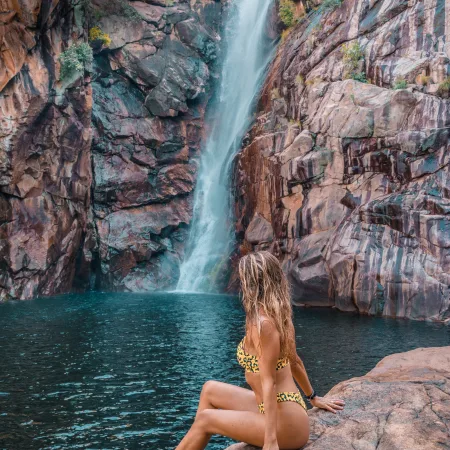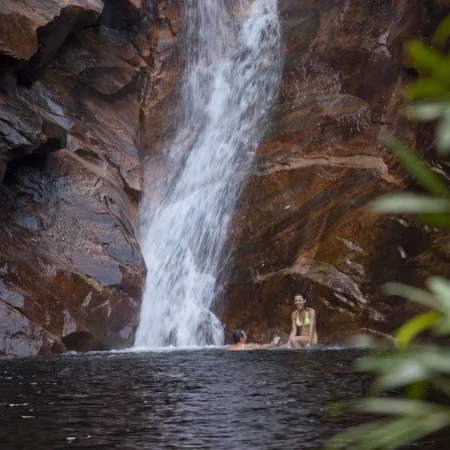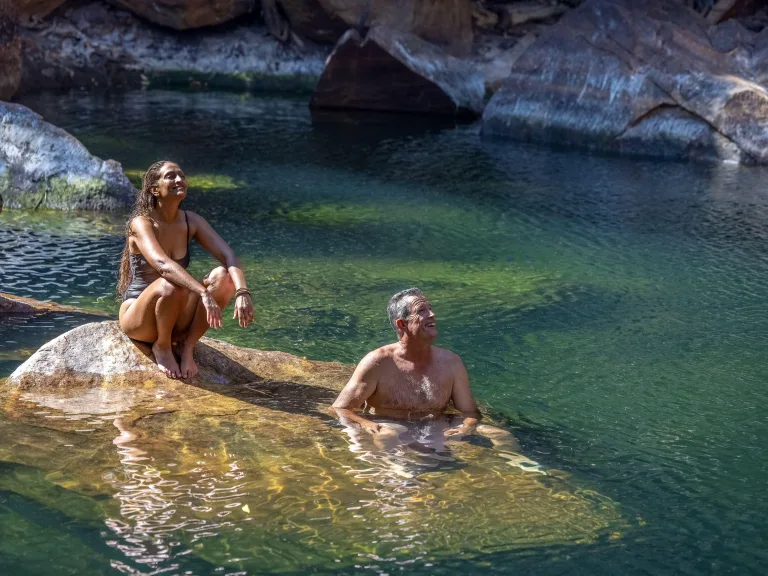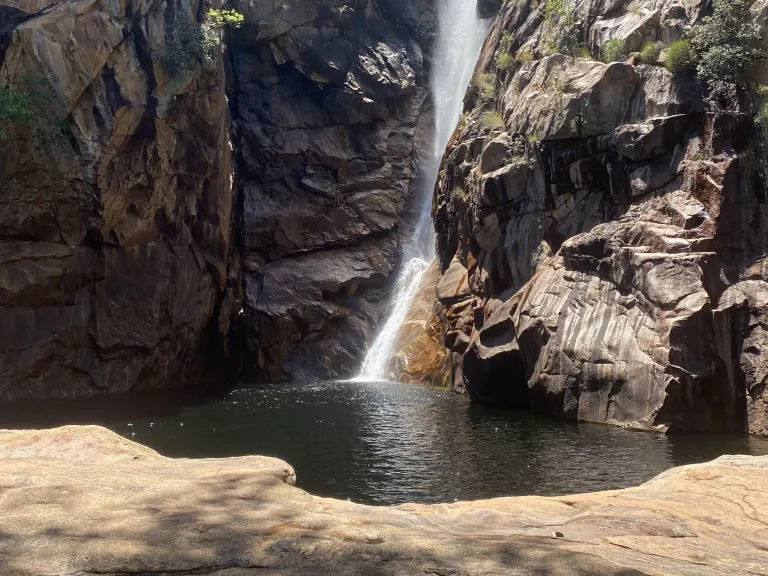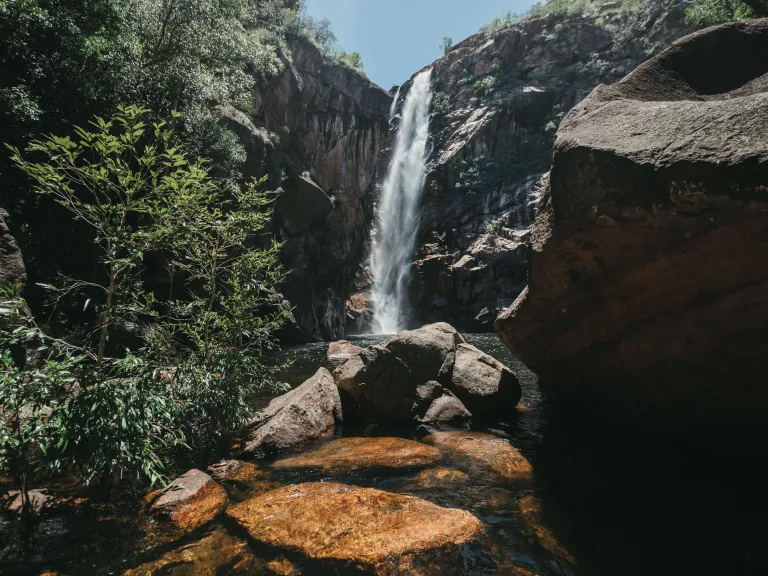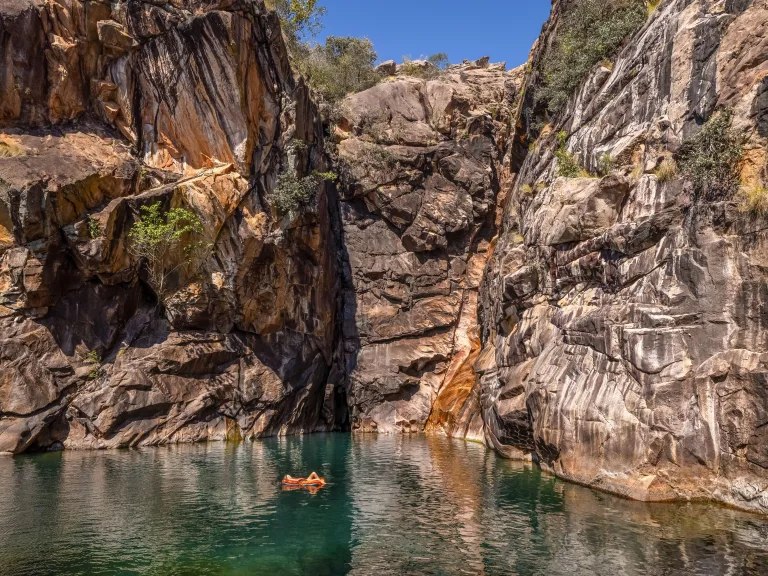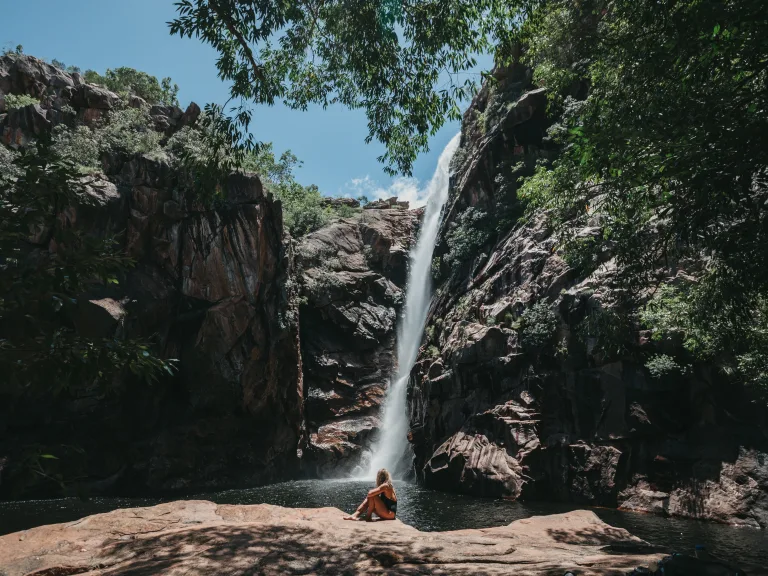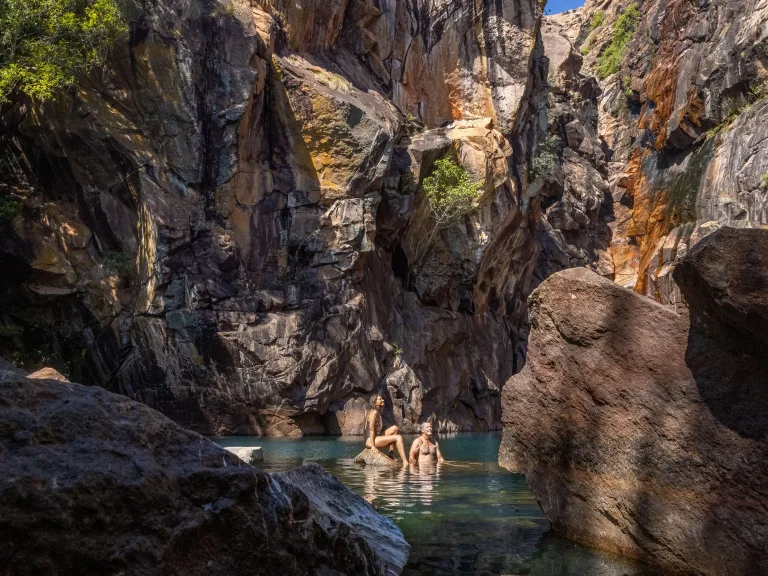Motor Car Falls
- Home
- See & Do
- Attractions
- Motor Car Falls
Cool Off Amidst the Picture-Perfect Motor Car Falls
Motor Car Falls is a hidden gem tucked deep within the southern hills of Kakadu National Park. Accessible year-round and particularly stunning in the Wet Season, this 7.5 km return hike takes you through lush monsoon forests, across rocky ridge-lines, and into one of Kakadu’s most rewarding swimming holes. As one of the only waterfalls accessible during the Wet Season, Motor Car Falls is a must-do for those seeking solitude, dramatic scenery, and a real outback adventure.
Bird lovers - keep an eye out for a bower bird nest around 1.5km into the trail!
Check Access report
- Distance: 7.5 km return
-
Duration: 2 hours hiking + time to relax at the falls
-
Trail Grade: Moderate (some rock scrambling, creek crossings)
-
Season: Accessible year-round, best during the Wet Season (Dec–Apr)
-
Swimming: Yes – in a large natural plunge pool
-
Facilities: Car park, picnic tables, interpretive signage
-
Safety: No mobile reception, very remote – check park alerts before visiting
The trail to Motor Car Falls begins at the Yurmikmik Walks car park, around 140 kilometres south of Jabiru along the Kakadu Highway. After turning onto Gimbat Road (signposted as the Gunlom turn-off), it’s a further 22-kilometre drive along a dirt road to reach the trailhead. While the road is typically graded during the visitor season, a four-wheel drive is recommended—especially after rainfall—though two-wheel drives may make it if conditions are dry. It's always wise to check in with the Bowali Visitor Centre before heading out.
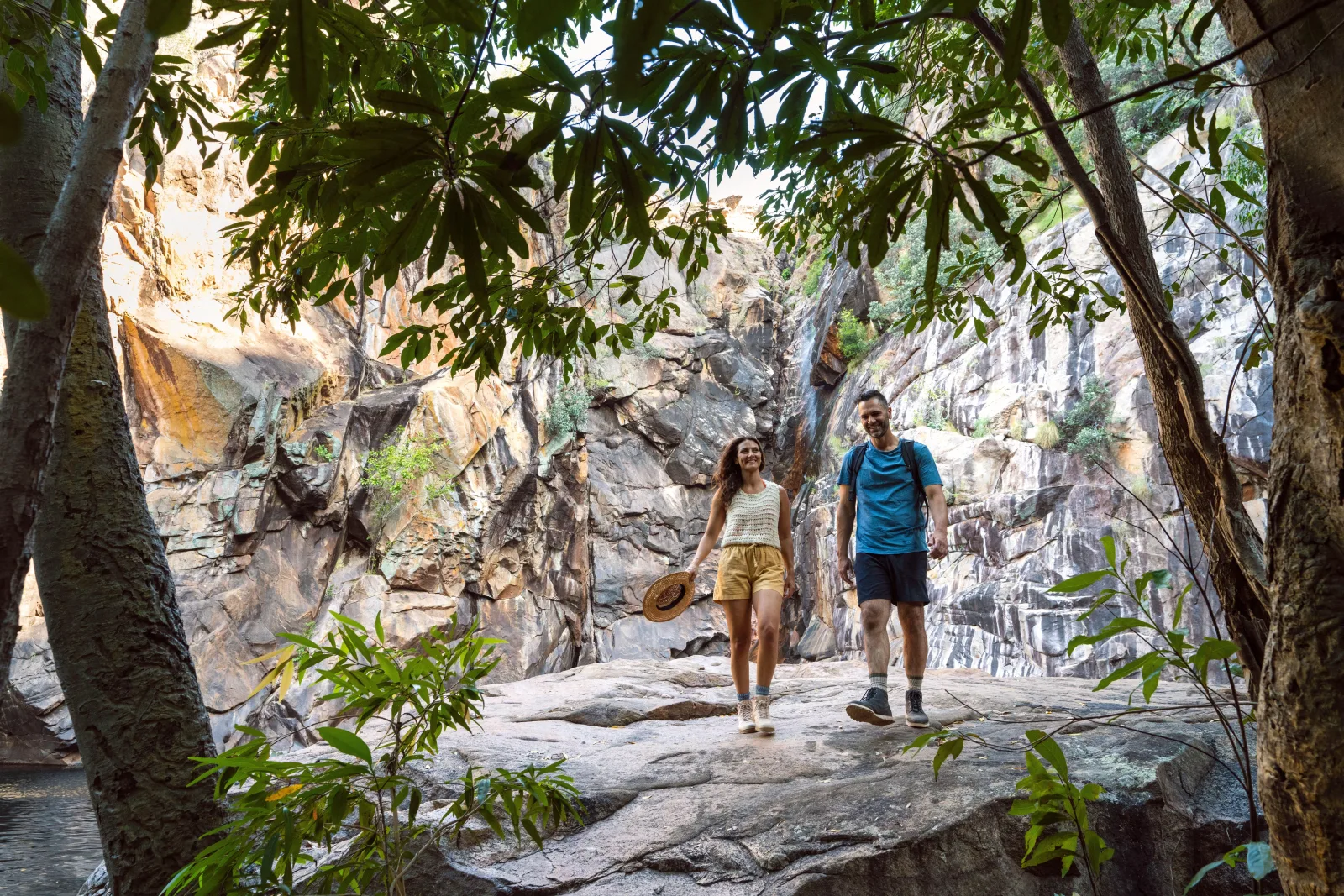
The walk itself is part of the Yurmikmik network of trails, and Motor Car Falls is its main attraction. The well-marked path follows an old exploration track through ridgelines and open woodlands, gradually giving way to monsoon forest as you approach the falls. The first kilometre of the trail is quite wild, especially during the wet season, with thick grass growing overhead and a few shallow creek crossings to navigate. It’s a true outback adventure and a chance to experience Kakadu in its most vibrant form. As you continue, the track opens up, revealing striking views of red escarpments lined with wind-blown palms.
A short detour to Yurmikmik Lookout (just 200 metres off the main track) offers sweeping views across the park and is well worth the extra effort. From here, the walk levels out before narrowing once again as it enters the final stretch toward the falls. The last few hundred metres are a bit more challenging, requiring some scrambling over boulders. Take your time—especially after recent rain, when the rocks can be slippery. Soon enough, you’ll begin to hear the distant roar of the waterfall, a clear sign you’re close.
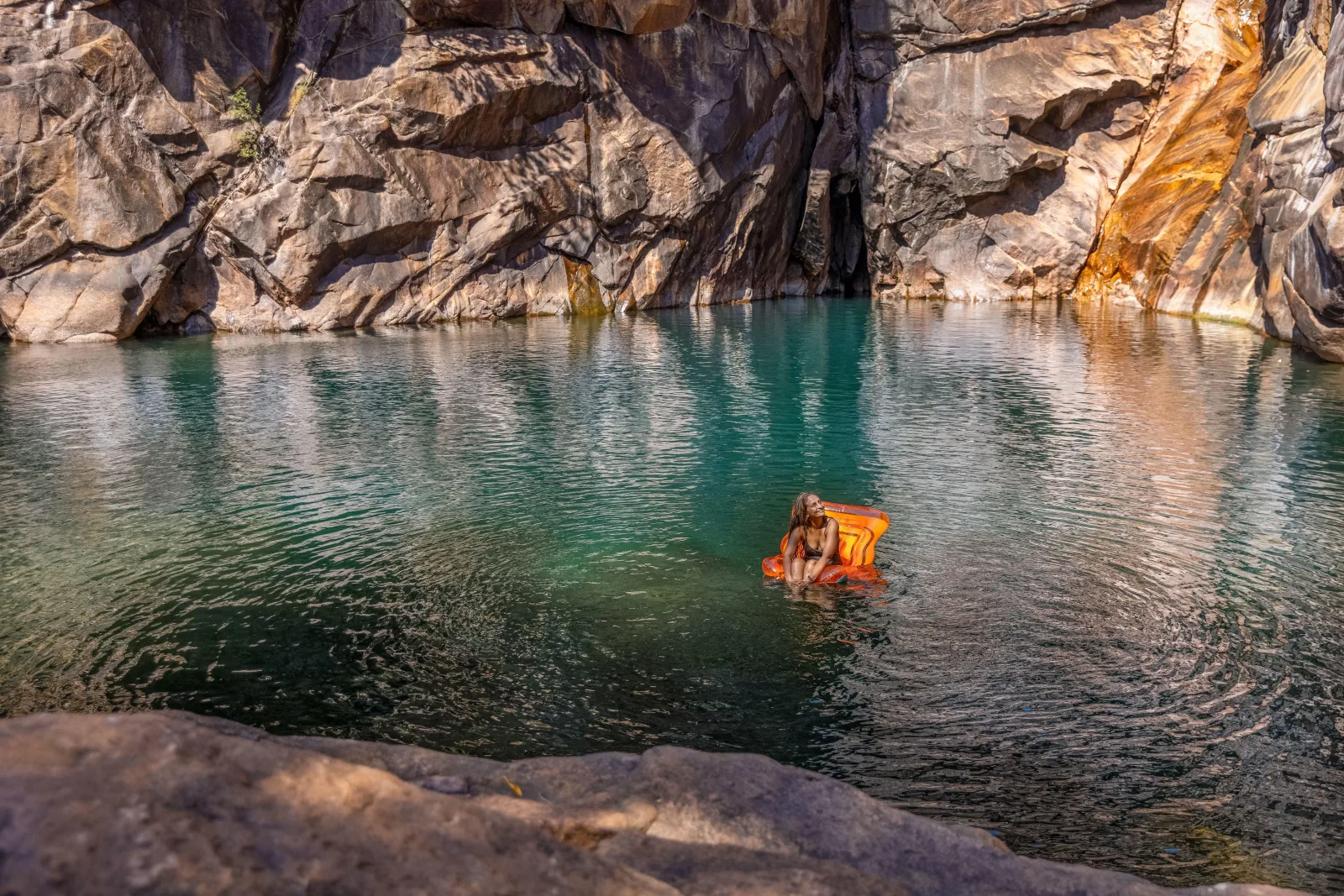
The Falls and Plunge Pool
Emerging from the forest, you’ll find yourself on a broad rock shelf with a panoramic view of Motor Car Falls spilling over a vertical sandstone wall into a deep, inviting pool. The setting is magical, especially during the wet season when water flows powerfully and the surrounding forest hums with life.
This large plunge pool is ideal for swimming and cooling off after the humid hike in. On a lucky day, you might spot long-neck turtles, freshwater fish, or even cherubin in the crystal-clear water. Swim across to feel the spray from the falls or explore the small cave tucked into the rock face. Just be mindful—while saltwater crocodiles are not found here, freshwater crocodiles may be present. Give them space and they’ll usually do the same for you.
During the height of the wet season, the pool may be deep enough for careful cliff-jumping from the surrounding rocks, but always check depth before taking the plunge. Water levels can shift quickly in this environment.
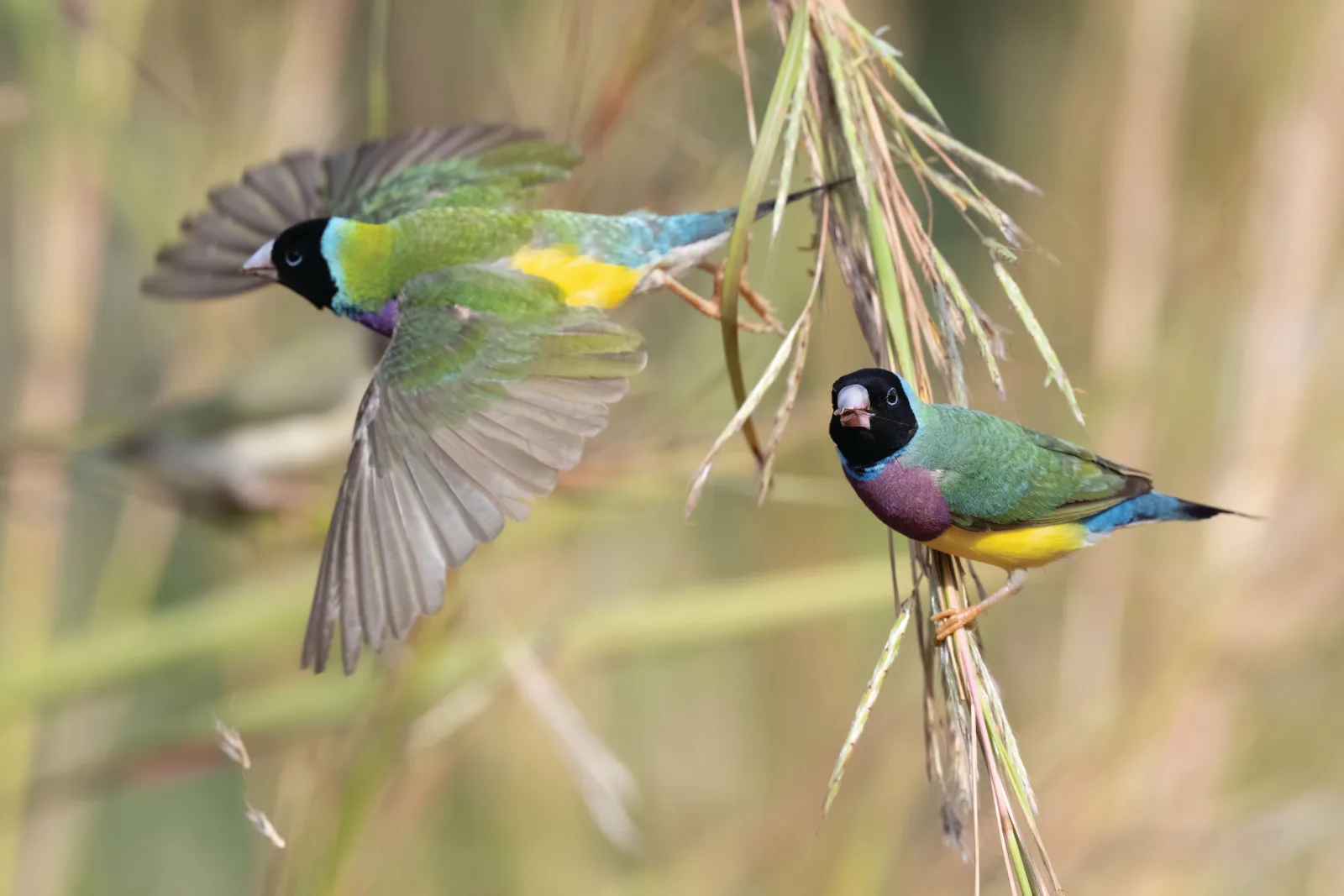
Wildlife and Natural Beauty
The walk to Motor Car Falls is also a chance to spot some of Kakadu’s remarkable wildlife. Look out for antilopine wallaroos moving through the bush, or listen for the distinctive calls of red-tailed black cockatoos overhead. Birdwatchers should keep their eyes peeled for finches—including the rare Gouldian finch—as well as hooded parrots, lorikeets, and the dazzling azure kingfisher near the water’s edge.
Monsoon forest sections may reveal golden orb spiders strung between trees and bright pink native flowers blooming along the track. Just don’t mistake them for the Sturt Desert Rose—they’re imposters, but still a beautiful sight.
What to Bring and Know Before You Go
Due to its remote location, it’s essential to be well-prepared. There is no phone reception in most of Kakadu, and the nearest fuel or facilities may be up to 100 kilometres away. Pack plenty of water (at least two litres per person), wear waterproof hiking shoes, and bring swimmers, a towel, sunscreen, and a rain jacket—showers are common in the wet season. A small first aid kit, snacks, and a hat are also highly recommended.
This walk is considered moderate in difficulty. While it’s not overly long, the combination of humidity, creek crossings, and isolation means it’s best suited to hikers with a reasonable level of fitness and experience. Be sure to leave no trace, taking all rubbish out with you and respecting the natural and cultural values of the area.
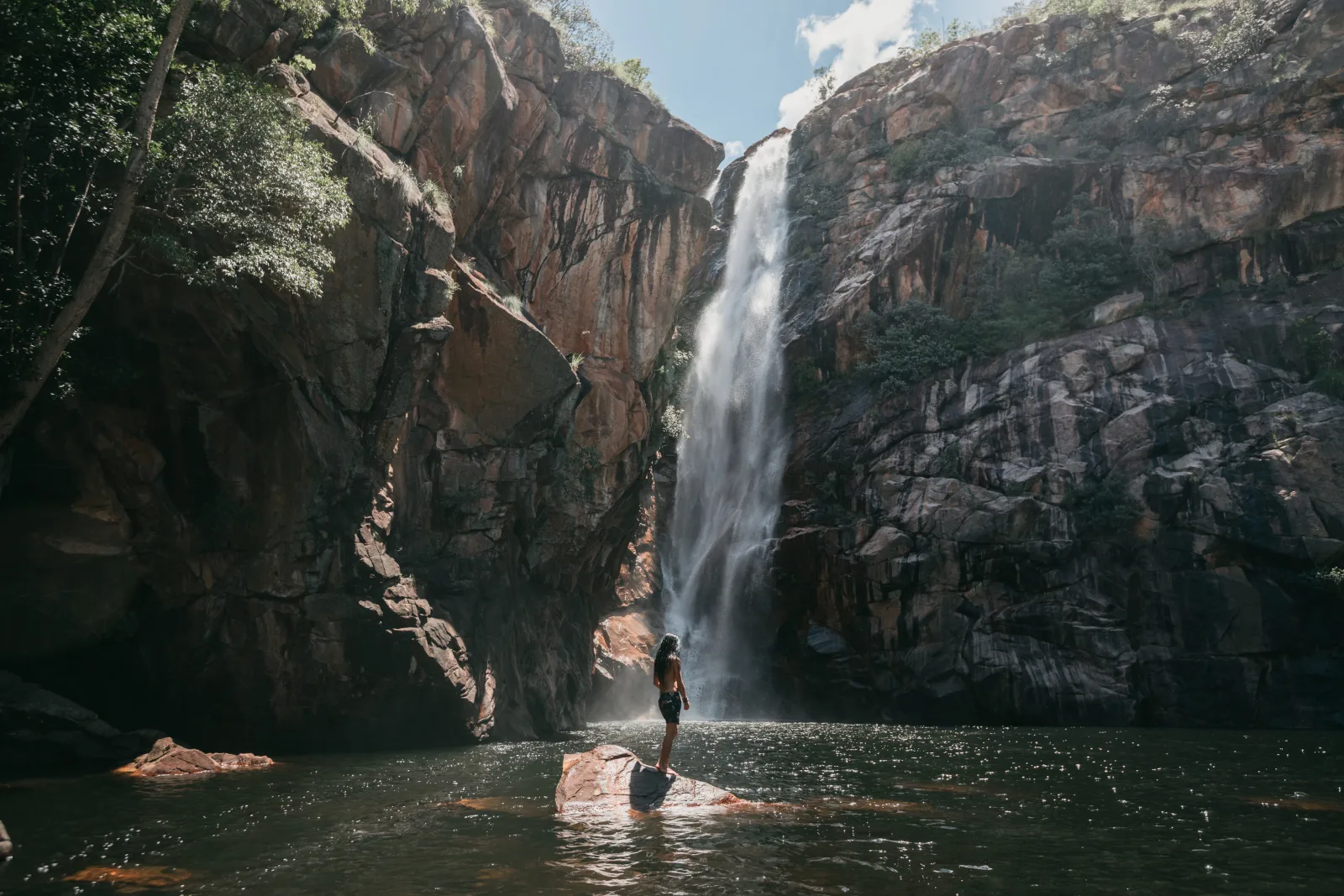
Why Motor Car Falls is Worth It
Motor Car Falls is one of Kakadu’s few accessible waterfalls during the wet season, making it an unbeatable destination for those travelling in the park’s greenest, most vibrant months. Unlike some of the more well-known sites in the north of the park, Motor Car offers a quieter, more immersive experience—with no crowds, plenty of wildlife, and the satisfaction of a hike well-earned.
Whether you go for a morning swim, a midday picnic, or just to feel the spray of the falls after the rain, this is a walk that captures the spirit of Kakadu’s wilder, wetter side.
